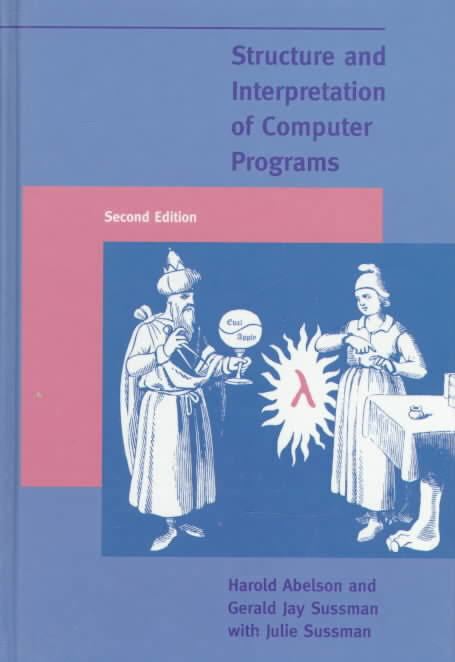8.8 /10 1 Votes8.8
Subject Computer programming LC Class QA76.6 .A255 1996 Original language English | 4.4/5 Goodreads Pages 657 Originally published 1979 Page count 657 | |||||||||||||||||||||||||||||||||
 | ||||||||||||||||||||||||||||||||||
Publication date 1985 (1st ed.), 1996 (2nd ed.) ISBN 0-262-51087-1 (2nd ed.) Similar Gerald Jay Sussman books, Lisp books, Computer Science books | ||||||||||||||||||||||||||||||||||
Structure and interpretation of computer programs lecture 1b
Structure and Interpretation of Computer Programs (SICP) is a textbook aiming to teach the principles of computer programming, such as abstraction in programming, metalinguistic abstraction, recursion, interpreters, and modular programming. It is widely considered a classic text in computer science, and is colloquially known as the wizard book, due to the wizard on the jacket. It was first published in 1985 by MIT Press and written by Massachusetts Institute of Technology (MIT) professors Harold Abelson and Gerald Jay Sussman, with Julie Sussman. It was formerly used as the textbook of MIT introductory programming class and at other schools. Before SICP, the introductory courses were almost always filled with learning the details of some programming language, while SICP focuses on finding general patterns from specific problems and building software tools that embody each pattern.
Contents
- Structure and interpretation of computer programs lecture 1b
- Structure and interpretation of computer programs lecture 7a
- Content
- Characters
- License
- Coursework
- Reception
- Influence
- References
Structure and interpretation of computer programs lecture 7a
Content
Using Scheme, a dialect of the Lisp programming language, the book explains core computer science concepts.
The program also introduces a practical implementation of the register machine concept, defining and developing an assembler for such a construct, which is used as a virtual machine for the implementation of interpreters and compilers in the book, and as a testbed for illustrating the implementation and effect of modifications to the evaluation mechanism. Working Scheme systems based on the design described in this book are quite common student projects.
Characters
The book uses some fictional characters repeatedly:
License
The book is licensed under a Creative Commons Attribution ShareAlike 4.0 License.
Coursework
The book was used as the textbook of MIT's old introductory programming class, 6.001. This class has been replaced by 6.0001, which uses Python. Other schools also made use of the book as a course textbook. The second edition (ISBN 0-262-51087-1) appeared in 1996. More recently it is used as the textbook of MIT's Large Scale Symbolic Systems class, 6.945.
Reception
Byte recommended SICP "for professional programmers who are really interested in their profession". The magazine stated that the book was not easy to read, but that it would expose experienced programmers to both old and new topics.
Influence
SICP has been influential in computer science education, and a number of later books have been inspired by its style.
